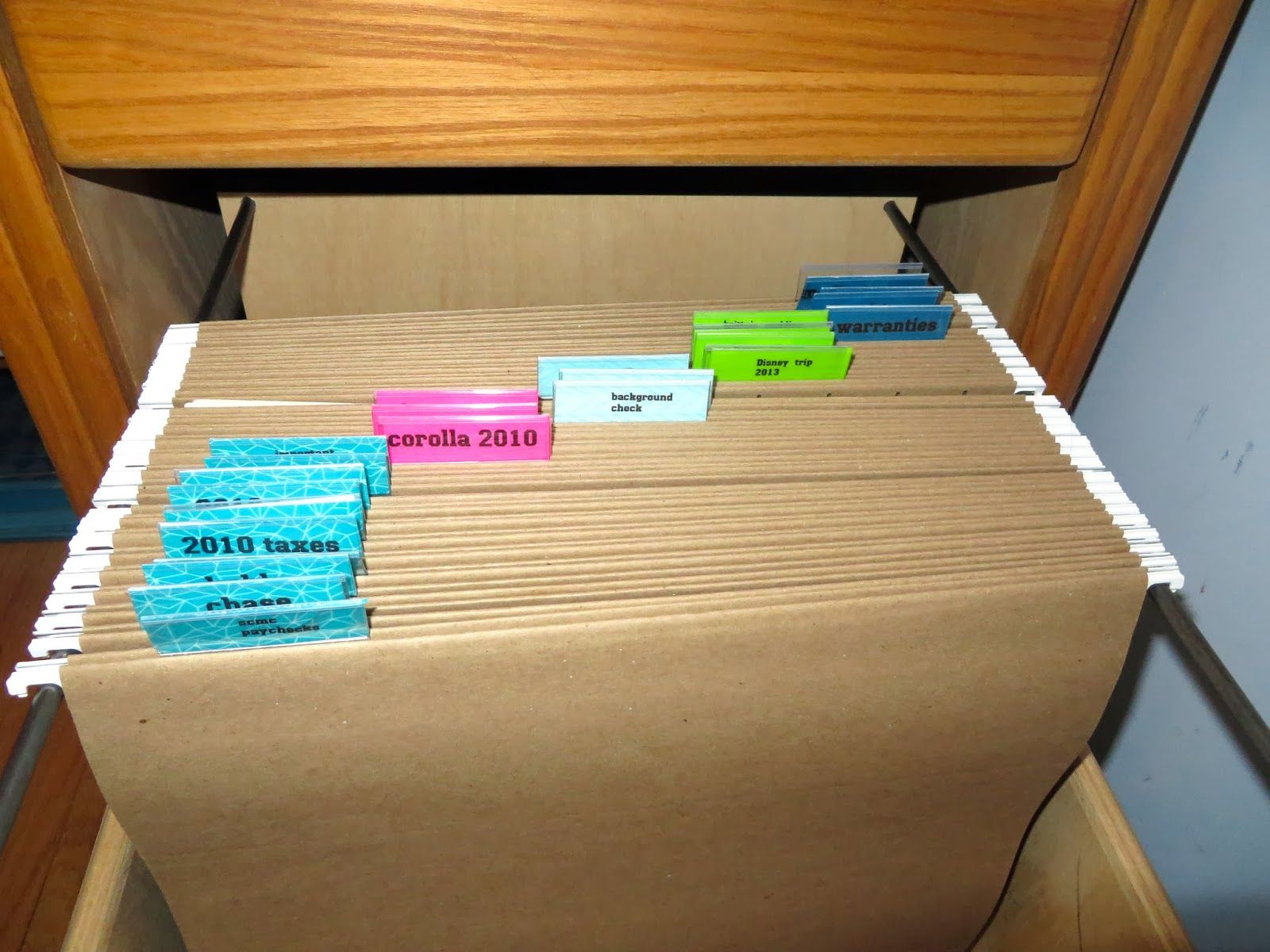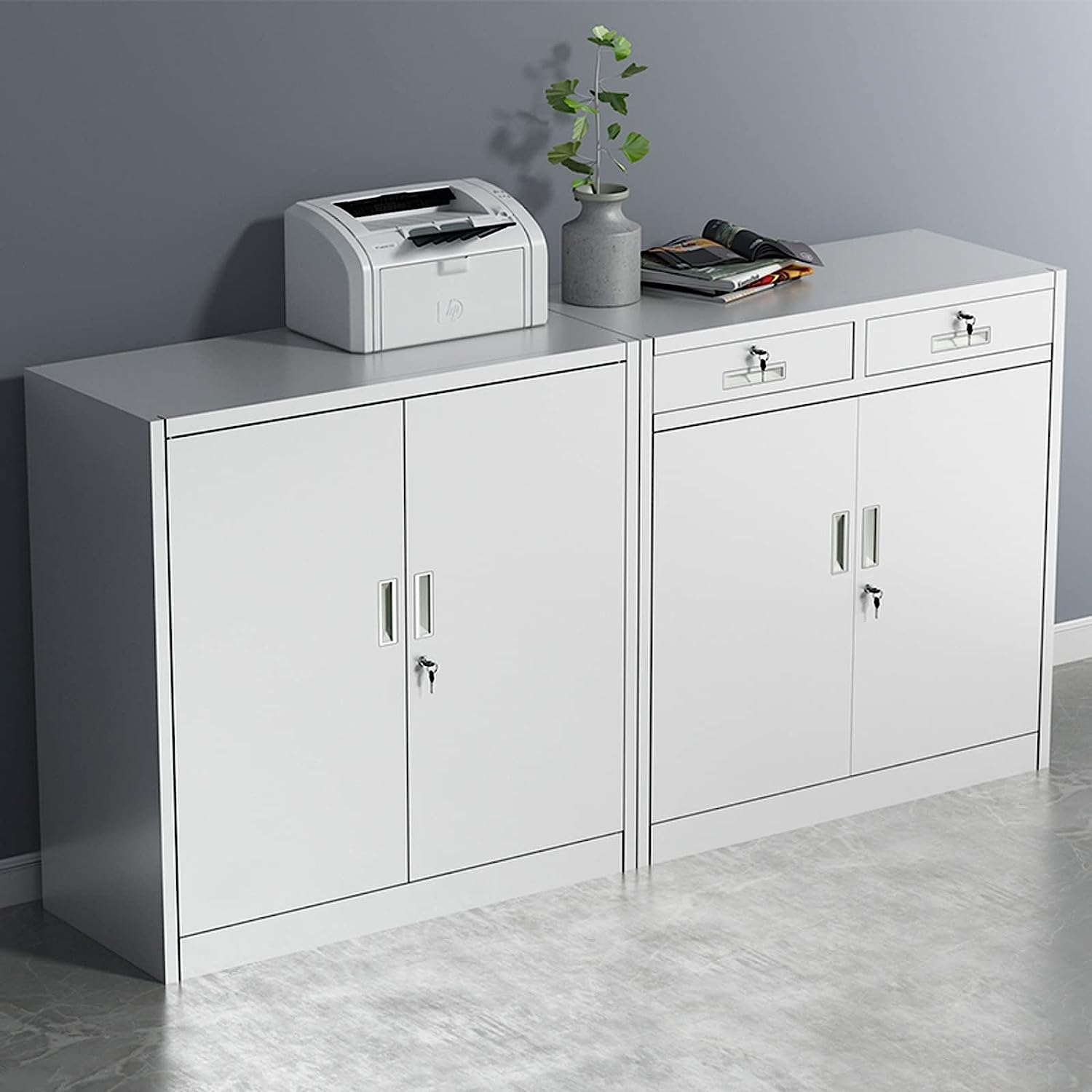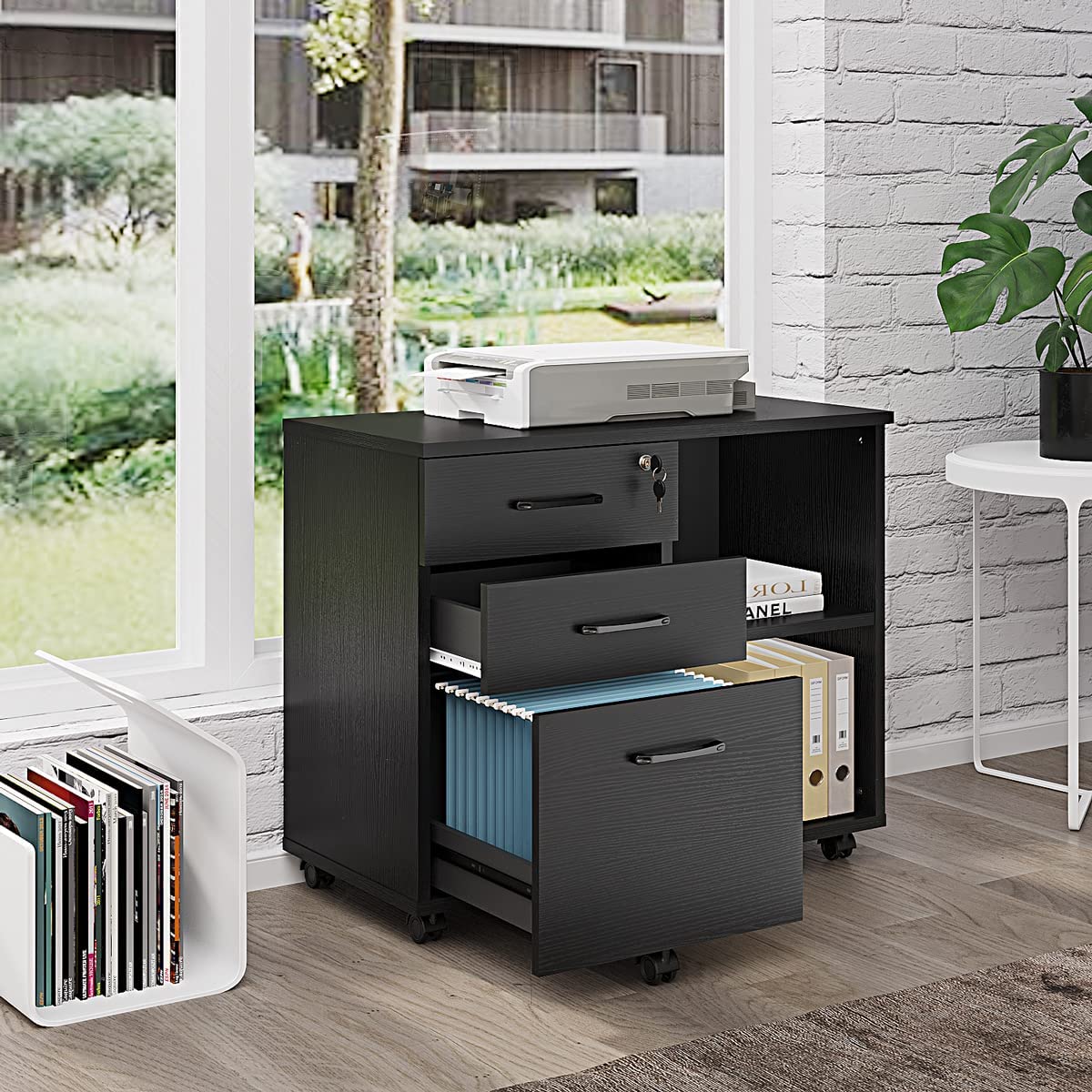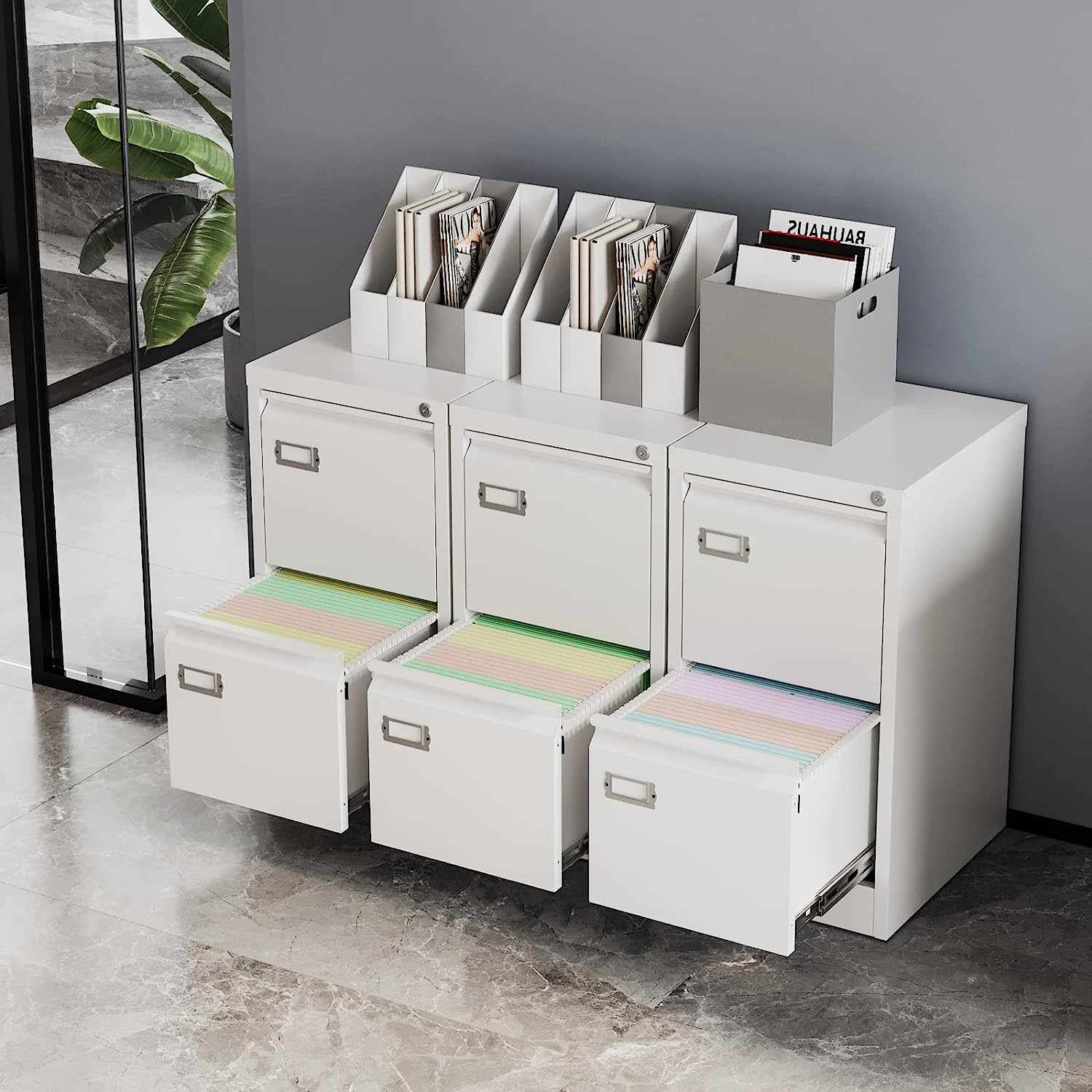

Articles
What Are Cabinet Files
Modified: October 20, 2024
Find the best OFFICE STORAGE solutions with our guide on what are cabinet files. Get organized and maximize your space with efficient storage options.
(Many of the links in this article redirect to a specific reviewed product. Your purchase of these products through affiliate links helps to generate commission for Storables.com, at no extra cost. Learn more)
Introduction
Welcome to the world of cabinet files! In the realm of software and data management, cabinet files play a crucial role in organizing and packaging various files into a single, compressed format. Whether you are a software developer or simply a curious user, understanding what cabinet files are and how they work can greatly enhance your understanding of file management and data compression.
So, what exactly are cabinet files? In simple terms, a cabinet file is an archive file format that is used to store multiple files and folders in a compressed format. Cabinet files have the extension “.cab” and are often used in scenarios where multiple files need to be bundled together for ease of distribution or storage.
The primary purpose of cabinet files is to efficiently package files while reducing their overall size. By compressing the data, cabinet files allow for more efficient storage and faster transmission over networks. Additionally, cabinet files provide a convenient means of organizing related files and maintaining their integrity in a single package.
The structure of cabinet files is hierarchical, consisting of various components that come together to form the complete file. At the top level, the cabinet file contains the cabinet header, followed by one or more folders, each containing files or additional folders. The files and folders within the cabinet file are organized according to the specific requirements of the application or software that uses them.
Creating cabinet files involves the use of specialized software or tools that facilitate the compression and packaging process. These tools compress the files and folders into a single cabinet file, ensuring that the overall size is minimized while maintaining the integrity of the data. Once created, cabinet files can be easily distributed or stored, making them a popular choice among software developers and distributors.
Extracting cabinet files is the process of reversing the compression and packaging, allowing the individual files and folders to be retrieved from the cabinet file. Users can extract specific files or extract the entire contents of the cabinet file, depending on their requirements. Extracted files retain their original format and can be accessed and used just like any other file on your system.
Now that we have explored the basics of cabinet files, let’s delve deeper into the benefits and common uses of this file format. Stay tuned to discover how cabinet files can enhance your file management and distribution processes.
Key Takeaways:
- Cabinet files are a versatile and efficient solution for bundling, compressing, and distributing multiple files, making them invaluable for software installations, data distribution, and file archiving.
- While cabinet files offer benefits such as efficient compression and streamlined software installations, they also have limitations like platform dependency and potential compatibility issues that users should consider when utilizing them.
Read more: How To Break Into A Filing Cabinet
Definition of Cabinet Files
Cabinet files, often abbreviated as .cab files, are a file archive format primarily used for bundling and compressing multiple files into a single package. They are commonly employed in software installation packages and are recognized by their .cab file extension.
A cabinet file acts as a container that holds various files and directories, maintaining their hierarchical structure while significantly reducing their overall size through compression. This compression is achieved using algorithms such as LZX, LZ77, or Quantum compression, allowing for efficient storage and transmission of data.
When it comes to structuring a cabinet file, it follows a hierarchical organization with a predefined set of components. At the top level, the cabinet file contains a cabinet header, which stores critical information about the file, such as the size of the cabinet file, the number of folders and files it contains, the compression method used, and much more.
Below the header, there are one or more folders that house the actual files and subfolders. Each folder is represented by a folder header, which contains details about the folder’s name, the number of files it contains, and additional metadata. Within these folders, files are stored, along with their accompanying file headers that hold vital information like the file’s name, size, and compressed size.
To facilitate the retrieval of files from a cabinet file, an optional file allocation table (FAT) can also be included. The FAT acts as an index, providing quick access to the files within the cabinet file, ensuring efficient extraction and usage.
It’s worth noting that cabinet files are not limited to containing only executable or system files. They can store any type of file, such as documents, images, audio, video, or even other cabinet files. This flexibility makes cabinet files a versatile archiving solution for various applications and scenarios.
While cabinet files are primarily associated with the Windows operating system, they can be accessed and extracted using compatible software tools on other platforms as well. These tools allow users to navigate the contents of a cabinet file, extract specific files or folders, and even perform modifications or updates as needed.
Overall, cabinet files serve as efficient containers for bundling and compressing multiple files, enabling streamlined file distribution, installation, and storage. Through their compression capabilities and organized structure, cabinet files play a vital role in software packaging and delivery, making them an integral part of the digital ecosystem.
Purpose of Cabinet Files
Cabinet files serve a variety of purposes in the realm of software installation, data distribution, and file management. Understanding their purpose can shed light on why they are widely used and how they benefit users and developers alike.
One of the main purposes of cabinet files is to efficiently package files into a single, compressed format. By compressing the contents, cabinet files reduce the overall file size, making it easier to distribute or transfer files over networks. This compression not only saves storage space but also speeds up the file transfer process, especially when dealing with large files or limited bandwidth.
Another purpose of cabinet files is to ensure the integrity and organization of related files. When bundling multiple files or directories, cabinet files maintain the hierarchical structure, preserving the relationships between files and folders. This organization makes it easier for users to navigate and access specific files, as well as simplifies the installation or extraction process.
Cabinet files are commonly used for software installations. By packaging all the necessary files, libraries, and resources into a single cabinet file, developers can create installation packages that are easy to distribute and install. This simplifies the installation process for end-users, as they only need to run the cabinet file and let the installation wizard handle the extraction and placement of files in the appropriate directories.
In addition to software installations, cabinet files also find applications in data distribution. When sharing a collection of files, such as documents, images, or media, cabinet files can bundle these files together for convenient sharing. Users can compress and encrypt the cabinet file to ensure data security and send it as a single attachment, reducing the chances of files being misplaced or separated during transmission.
Furthermore, cabinet files can serve as a means of archiving files or creating backups. By compressing and packaging related files into a cabinet file, users can efficiently store and organize their files. This helps in minimizing storage requirements while providing a centralized location for retrieving and restoring files when needed. Cabinet files can also be password protected, adding an extra layer of security to the archived or backup files.
Overall, the purpose of cabinet files is to streamline file management, enhance data distribution, and simplify software installations. With their compression capabilities, hierarchical structure, and versatility, cabinet files play a vital role in maintaining file integrity, optimizing storage space, and facilitating efficient file transfer and installation processes.
Structure of Cabinet Files
The structure of cabinet files is designed to organize and store multiple files and folders in a compressed format. Understanding the components of this structure can help unravel how cabinet files are organized and how the data is stored within them.
At the top level, cabinet files contain a cabinet header that provides essential information about the overall file. This header includes details such as the total size of the cabinet file, the number of folders and files it contains, the compression type used, and other metadata that helps manage and process the cabinet file.
Beneath the cabinet header, there are one or more folders within the cabinet file. A folder is represented by a folder header, which holds information about the folder’s name, the number of files it contains, and additional metadata. Each folder can include both files and subfolders, allowing for a hierarchical organization of data.
Within each folder, individual files are stored along with their corresponding file headers. The file headers contain crucial details about each file, such as the file’s name, its size in its original form, and its compressed size within the cabinet file. The file headers also provide information about its offset, which indicates the position where the file’s data begins in the cabinet file.
One important component that can be included in the structure of cabinet files is the optional file allocation table (FAT). The FAT acts as an index, providing quick access to the files within the cabinet file. It maps the offset and size of each file, enabling efficient extraction and access to individual files without having to decompress the entire cabinet file.
It’s worth noting that cabinet files can utilize different compression methods. Some common compression algorithms used in cabinet files include LZX, LZ77, and Quantum compression. These compression algorithms optimize the size of the data within the cabinet file, reducing the overall file size without sacrificing the integrity of the files.
To access the contents of a cabinet file, compatible software tools or libraries are typically used. These tools can navigate the structure of the cabinet file, extract specific files or folders, and even modify or update the contents as needed.
Overall, the structure of cabinet files provides a hierarchical organization of files and folders, along with compression and indexing mechanisms. This structured approach allows for efficient storage, retrieval, and manipulation of data within the cabinet file, making it a preferred format for bundling and compressing files in various software distribution and archival scenarios.
Creating Cabinet Files
Creating cabinet files involves the use of specialized software or tools that facilitate the compression and packaging of files into the cabinet file format. These tools enable developers and users to create cabinet files for various purposes, such as software installations, data distribution, or file archiving.
When creating a cabinet file, the first step is to select the files and folders that need to be included in the package. These can be files related to a specific software application, a collection of documents, or any other set of files that are intended to be bundled together.
Once the files have been selected, the cabinet creation tool compresses the files using one of the predefined compression algorithms, such as LZX, LZ77, or Quantum compression. This compression process reduces the overall size of the files, making them more manageable for distribution or storage.
During the creation of a cabinet file, it’s also possible to set parameters and options related to the compression level, encryption, and other configurations. These options help tailor the cabinet file creation process to specific requirements, such as ensuring data security or optimizing the compression ratio.
In addition to compressing the files, the cabinet creation tool also generates the necessary headers and structures within the cabinet file. This includes creating the cabinet header, which holds important information about the cabinet file, such as the size and number of folders and files it contains, as well as the compression method used.
The tool then proceeds to create folder headers for each folder included in the cabinet file. These folder headers store metadata about the folders, such as their names, the number of files they contain, and any other relevant information.
For each file, the tool generates a file header that holds details about the file, such as its name, size, and compressed size. The file header also provides the offset where the file’s data is stored within the cabinet file, allowing for its retrieval during extraction.
Once all the necessary headers and structures have been created, the cabinet creation tool consolidates everything into a single cabinet file. This file, with the .cab extension, contains the compressed data, headers, and other information needed to represent the bundled files.
After the cabinet file is created, it can be easily distributed or stored as a single, self-contained package. Users can share the cabinet file with others, transfer it over networks, or archive it for future use.
Overall, the process of creating cabinet files involves selecting the files, compressing them, generating the necessary headers and structures, and finally consolidating everything into a single cabinet file. This enables the efficient bundling, compression, and organization of files for various purposes, providing a streamlined approach to file distribution and management.
Cabinet (CAB) files are an archive format used to compress and store multiple files. They are commonly used for software installation packages on Windows systems. To open a CAB file, you can use built-in Windows tools or third-party software.
Read more: How To Open A File Cabinet
Extracting Cabinet Files
Extracting cabinet files is the process of retrieving the individual files and folders stored within a cabinet file. This extraction process allows users to access and utilize the contents of the cabinet file in their original form, whether it’s for installation, data retrieval, or other purposes.
To extract cabinet files, various software tools or utilities are available that can handle the extraction process. These tools can navigate the structure of the cabinet file, locate the desired files or folders, and extract them to a specified location on the system.
When extracting cabinet files, users have the flexibility to extract specific files or extract the entire contents of the cabinet file. This flexibility allows for targeted file retrieval or a bulk extraction, depending on the requirements of the user.
The extraction process begins by selecting the cabinet file that needs to be extracted. Users can point the extraction tool to the cabinet file to initiate the process.
Once the cabinet file is loaded, the extraction tool navigates the file’s structure, starting from the cabinet header. The tool reads the cabinet header to gather information about the cabinet file, such as the number of folders and files it contains, the compression method used, and other metadata.
The tool then proceeds to extract the individual files and folders from the cabinet file. It uses the information from the folder headers to locate the files and subfolders within the cabinet file.
During the extraction process, the tool reverses the compression applied to the files. Using the compression algorithm specified in the cabinet header, the tool decompresses the files, restoring them to their original size and format.
As the extraction progresses, the tool creates the necessary directories on the user’s system to mirror the structure of the cabinet file. This ensures that the extracted files are placed in the appropriate folders and subfolders as they were originally organized within the cabinet file.
Once the extraction is complete, users can access and utilize the extracted files as they would with any other files on their system. These files retain their original format and can be modified, opened, or executed as needed.
It’s important to note that during the extraction process, some extraction tools may provide additional options or configurations. This could include specifying the location where the files are extracted, preserving file attributes or timestamps, and enabling overwrite or skip options in case of file conflicts.
Overall, extracting cabinet files is a straightforward process that involves using specialized tools to navigate the cabinet file’s structure, decompress the files, and place them in the appropriate folders. This allows users to access and utilize the contents of the cabinet file, whether it’s for software installation, data retrieval, or other purposes.
Benefits of Using Cabinet Files
Using cabinet files offers several benefits when it comes to file storage, distribution, and management. These advantages make them a popular choice among software developers, distributors, and users alike. Let’s explore some of the key benefits of utilizing cabinet files:
- Efficient Compression: Cabinet files employ compression algorithms to reduce the overall size of bundled files. This compression ensures efficient storage and transmission of data, saving valuable disk space and reducing bandwidth requirements during file transfers.
- File Organization: Cabinet files maintain the hierarchical structure of files and folders within the archive, making it easier to organize and manage related files. This organization contributes to efficient file retrieval, reducing the time and effort required to locate and access specific files.
- Streamlined Software Installations: Cabinet files are frequently used to package software installations. By bundling all the necessary files and resources into a single cabinet file, software installations become more straightforward and streamlined. Users only need to run the cabinet file, and the installation process handles the extraction and placement of files in the appropriate directories.
- Optimized File Distribution: Cabinet files provide a convenient means of distributing multiple files as a single package. By compressing and packaging files, cabinet files simplify file sharing and transmission. They can be easily sent as a single attachment, reducing the chances of files being misplaced or separated during distribution.
- Data Security: Cabinet files can be encrypted to enhance data security during storage or transmission. Encrypting the cabinet files ensures that the contents remain protected, safeguarding sensitive information from unauthorized access.
- Archiving and Backups: Cabinet files are useful for archiving and creating backups of files. By compressing and packaging related files, they enable efficient storage and organization of files. Cabinet files can be password protected to provide an extra layer of security for the archived or backed-up files.
- Easy Extraction and Access: Cabinet files can be easily extracted using compatible tools. The extraction process allows users to access the individual files and folders, which retain their original format. This accessibility enables users to utilize the files without any additional steps or conversions.
With these benefits, cabinet files serve as an effective solution for compressing, organizing, and distributing multiple files. They streamline file management, enhance data security, and simplify software installations, making them a valuable asset in various applications and scenarios.
Common Uses of Cabinet Files
Cabinet files find a wide range of uses in various industries and applications. Their versatility and compression capabilities make them a popular choice for bundling, compressing, and distributing multiple files. Let’s explore some common use cases where cabinet files come into play:
- Software Installations: One of the most common uses of cabinet files is in software installations. Cabinet files are used to package all the necessary files, resources, and dependencies required for the installation process. This allows for easy distribution and streamlined installations, simplifying the deployment of software applications.
- Data Distribution: Cabinet files are utilized in scenarios where multiple files need to be shared or distributed as a single package. Whether it’s documents, images, media files, or any other type of data, cabinet files bundle these files together for convenient sharing. Users can compress and encrypt the cabinet file to ensure data security and transfer it as a single attachment, reducing the chance of file fragmentation or misplacement during distribution.
- File Archiving: Cabinet files serve as an efficient means of archiving files. By consolidating related files into a single cabinet file, users can store and organize files while optimizing storage space. Cabinet files can be password protected to secure the archived files, preventing unauthorized access and ensuring data privacy.
- Data Backup: Cabinet files are an excellent choice for creating backups of important files. By compressing and packaging the files, cabinet files provide an organized and efficient backup solution. Storing files in a cabinet file format helps in minimizing storage requirements and simplifies the retrieval and restoration process when needed.
- Application Packaging: Cabinet files are widely used in packaging applications for distribution. They allow developers to bundle all the necessary files, libraries, and resources into a single cabinet file. This packaging simplifies the installation process for end-users while providing an organized structure for the application files.
- Data Compression: Cabinet files serve as a reliable file compression format. They optimize the storage and transmission of data by reducing file sizes through compression algorithms. This compression ensures efficient utilization of disk space and speeds up file transfers, particularly in situations where limited bandwidth or storage resources are a concern.
Overall, cabinet files are a versatile solution for bundling, compressing, and distributing files in various applications. From software installations to data distribution and file archiving, cabinet files offer a practical and efficient approach to managing and handling multiple files.
Limitations of Cabinet Files
While cabinet files offer numerous benefits for file compression and organization, they also have a few limitations that should be considered. Understanding these limitations can help users make informed decisions when it comes to utilizing cabinet files in their workflow. Let’s explore some of the common limitations of cabinet files:
- Platform Dependency: Cabinet files are primarily associated with the Windows operating system. While they can be accessed and extracted using compatible software tools on other platforms, their native support and seamless integration may be limited. This can pose challenges when it comes to cross-platform compatibility and interoperability.
- Lossy Compression: Cabinet files use lossy compression algorithms, which can result in a slight degradation in file quality. While this loss in quality is typically negligible for most file types, certain file formats such as images or audio may experience a noticeable reduction in fidelity. It’s essential to consider this limitation when compressing files that require high-quality reproduction.
- Latency in Extraction: Extracting files from a cabinet file can be a time-consuming process, especially for larger files or cabinets with a significant number of files. This latency in extraction can cause delays in accessing the required files, particularly in scenarios where real-time access is crucial. Users should consider this factor when utilizing cabinet files in time-sensitive applications.
- Limited Modification: Cabinet files are primarily designed for bundling and compression purposes, making them less suitable for frequent modifications. Once a file is included in a cabinet file, modifying or updating specific files within the cabinet file can be complex and time-consuming. It’s recommended to extract the necessary files, make the desired modifications, and then create a new cabinet file if frequent changes are anticipated.
- Single-Threaded Extraction: The process of extracting files from a cabinet file is typically single-threaded, meaning that only one file can be extracted at a time. This can impact the overall extraction speed when dealing with a large number of files. Users should consider the extraction time when planning file retrievals from cabinet files with a significant file count.
- Compatibility Issues: Cabinet files can occasionally encounter compatibility issues when being extracted or accessed with some third-party extraction tools or utilities. These compatibility issues may arise due to differences in the interpretation and implementation of the cabinet file format. It’s essential to ensure the compatibility of the extraction tool with the specific cabinet file before performing extraction operations.
Despite these limitations, cabinet files remain a widely used and effective solution for file compression, storage, and distribution. Understanding their limitations enables users to make informed decisions and work around any potential drawbacks they may encounter during their usage of cabinet files.
Read more: Where To Buy File Cabinet
Conclusion
In conclusion, cabinet files provide a valuable solution for bundling, compressing, and distributing multiple files in a single package. They offer a range of benefits such as efficient compression, organized file structure, streamlined software installations, optimized file distribution, and enhanced file archiving capabilities.
Cabinet files play a crucial role in software installations, making it easier for developers to package all the necessary files, resources, and dependencies into a single cabinet file. This simplifies the installation process for end-users, ensuring a smooth and efficient deployment of software applications.
Moreover, cabinet files excel in data distribution, allowing users to bundle related files for easy sharing. Compressing the files into a cabinet file reduces the file size, making it more convenient for transmission over networks. Cabinet files also find applications in file archiving and backups, providing an organized and efficient means of storing and retrieving files in a compressed format.
While cabinet files have limitations, such as platform dependency, lossy compression, latency in extraction, limited modification, single-threaded extraction, and potential compatibility issues, these drawbacks can be mitigated by understanding their implications and planning accordingly.
To utilize cabinet files effectively, users can employ compatible software tools that facilitate the extraction, creation, and management of cabinet files. These tools offer a user-friendly interface and provide options to customize compression settings, encryption, and other parameters to suit specific needs.
As technology continues to evolve, cabinet files remain a versatile and widely-used solution for file compression, organization, and distribution. Their ability to efficiently bundle and compress multiple files into a single package makes them an invaluable tool for developers, distributors, and users across various industries.
Whether it’s for software installations, data distribution, file archiving, or other applications, cabinet files offer a practical and efficient approach to file management and distribution. By harnessing the benefits of cabinet files and addressing their limitations, users can streamline their file handling processes and enhance their overall productivity.
Frequently Asked Questions about What Are Cabinet Files
Was this page helpful?
At Storables.com, we guarantee accurate and reliable information. Our content, validated by Expert Board Contributors, is crafted following stringent Editorial Policies. We're committed to providing you with well-researched, expert-backed insights for all your informational needs.














0 thoughts on “What Are Cabinet Files”